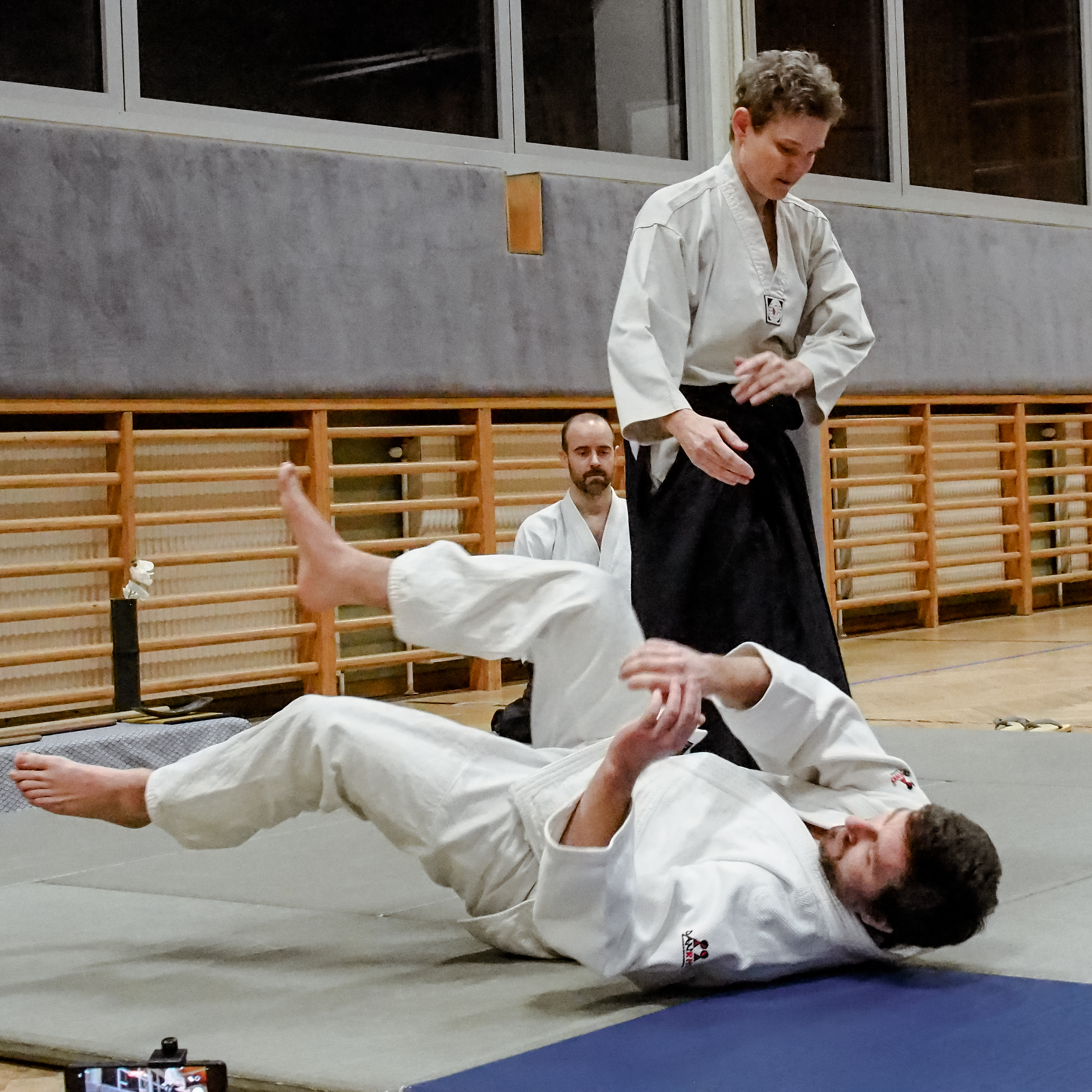Who is what – ayumi ashi, kaiten, tenkan aso.
Just a short explanation on an apparently everlasting discussion about the meanings of the different stepping methods (ashi sabaki) as well as basic movements in Aikido like irimi, tenkan, kaiten aso. The description provided here focuses on a more practical application of the terms, leaving its underlying meanings and etymology mostly aside.
Let’s take a look at ashi sabaki (foot movements) first …
TSUGI ASHI 次 足
lit.: subsequent, following step
fig.: pull back foot up, advance front foot
It is a way to move your body without switching sides. In other words, the front leg remains unchanged prior to and subsequent to the step. The step is similar to a step touch foot movement. There are two ways to move: forward movement (omote tsugi ashi) or backward movement (ushiro tsugi ashi).
AYUMI ASHI 歩み 足
lit.: alternating footwork
fig.: “natural” walking; left foot passes right, right foot passes left aso.
The method of moving that involves changing sides of the body. Foot movement resembles the characteristics of a natural walk, an alternating left-right foot movement occurs. For tsugi ashi, there are two options as well: forward (omote ayumi ashi) and reverse (ushiro ayumi ashi).
OKURI ASHI 送 足
lit.: eskort, send step
fig.: pull back foot up, advance front foot
This is a variation of tsugi ashi. Okuri ashi involves pulling the back foot towards the front foot (or even crossing it over) and only then pushing the front foot forwards. It can be performed forwards or backwards.

Now let’s take a look at basic terms to describe (whole) body movements …
TENKAI 転回
lit.: turn around rotation
fig.: turn the hip (generally 180 or 90 degrees), migi to hidari hanmi or vice versa
This is a rotation on the spot without placing a foot. The weight is placed between the feet and the hips are rotated on the balls of the feet to relieve the joints and speed up the movement. The hips rotate through 180 degrees, while the feet rotate through 90 degrees. This involves alternating between migi and hidari hanmi. The front foot becomes the back foot and vice versa.
KAITEN 回転
lit.: rotation (around something), revolution, turning
fig.: slide step and rotate (the hip/body)
It is indeed “just” a variation of tenkai. This is the method of turning the body 180 degrees after a slight irimi movement using tsugi ashi.
TENKAN 転換
lit.: conversion; diversion; changeover
fig.: turn the body (mainly 180 degrees)
Starting from migi hanmi, the right foot is rotated 180 degrees. The subsequent repositioning of the left foot causes the hips to rotate 180 degrees – and at the same time a return to migi hanmi. Hidari hanmi is performed in the same way with the sides reversed.
IRIMI TENKAN 入り身 転換
lit.: enter the body and changeover
fig.: full step forward, rotate the body, step backward (change hanmi position)
Irimi tenkan is a dynamic method of entering and turning the body, with both movements combined we can speak of tai sabaki – this can be translated as (evasive) body movement, or simply to find one’s place. The first phase of irimi tenkan is omote ayumi ashi. The second phase involves rotating on the front foot according to tenkan rules. In practice, the emphasis is on fluidity resulting from the combination of both forms.
Sources:
Hadamitzky, Wolfgang (2012): Kanji und Kana: Die Welt der japanischen Schrift in einem Band
Ciechanowicz, Bartosz (2023): Jo. Staff in Aikido. Kihon Aikijo: Volume I
Krug-Riehl, Hildegard: Tamura, Nobuyoshi. Aikido. Marseille: Eigenverlag/AGEP 1986.
de.wikipedia.org/wiki (2024)
en.wiktionary.org (2024)
Author’s note: I do not wish the articles I have written to be understood as the last resort, and I make no claim to completeness. Rather, I hope to be able to make a contribution to a juxtaposition of interpretations and a lively debate about budo. I would also like to politely invite all readers to comment, critically scrutinise, edit, supplement, etc. Thank you very much.